If you’ve spent some time in digital marketing, you’d think making quality content is the cure-all to every marketing woe. It’s in every SEO guide and content marketing playbook and tossed around like buzzwords from a management consultant’s presentation.
But what does “quality” even mean? Some people think the Alchemist changed their lives, while others think it’s the worst thing ever written. What’s “quality” to one reader may be complete BS to another.
So how do you measure whether your content is truly “quality”?
To find out, we analyzed our own content at Ahrefs and discovered five distinct levels. Each level represents a different kind of investment, skill set, and potential impact on your marketing goals.
Understanding these five distinct levels will help you:
- Balance quick SEO wins with long-term thought leadership content
- Match content types to your team’s experience and expertise levels
- Develop your team’s skills over time, as your team members can climb from basic to advanced, continuously leveling up their writing and research abilities.
- Strategically allocate resources where they’ll generate the most impact
Here are the five levels:
Here’s how:
- Go to Ahrefs’ Site Explorer
- Enter your competitor’s domain
- Go to the Top pages report
- Toggle SERP titles on
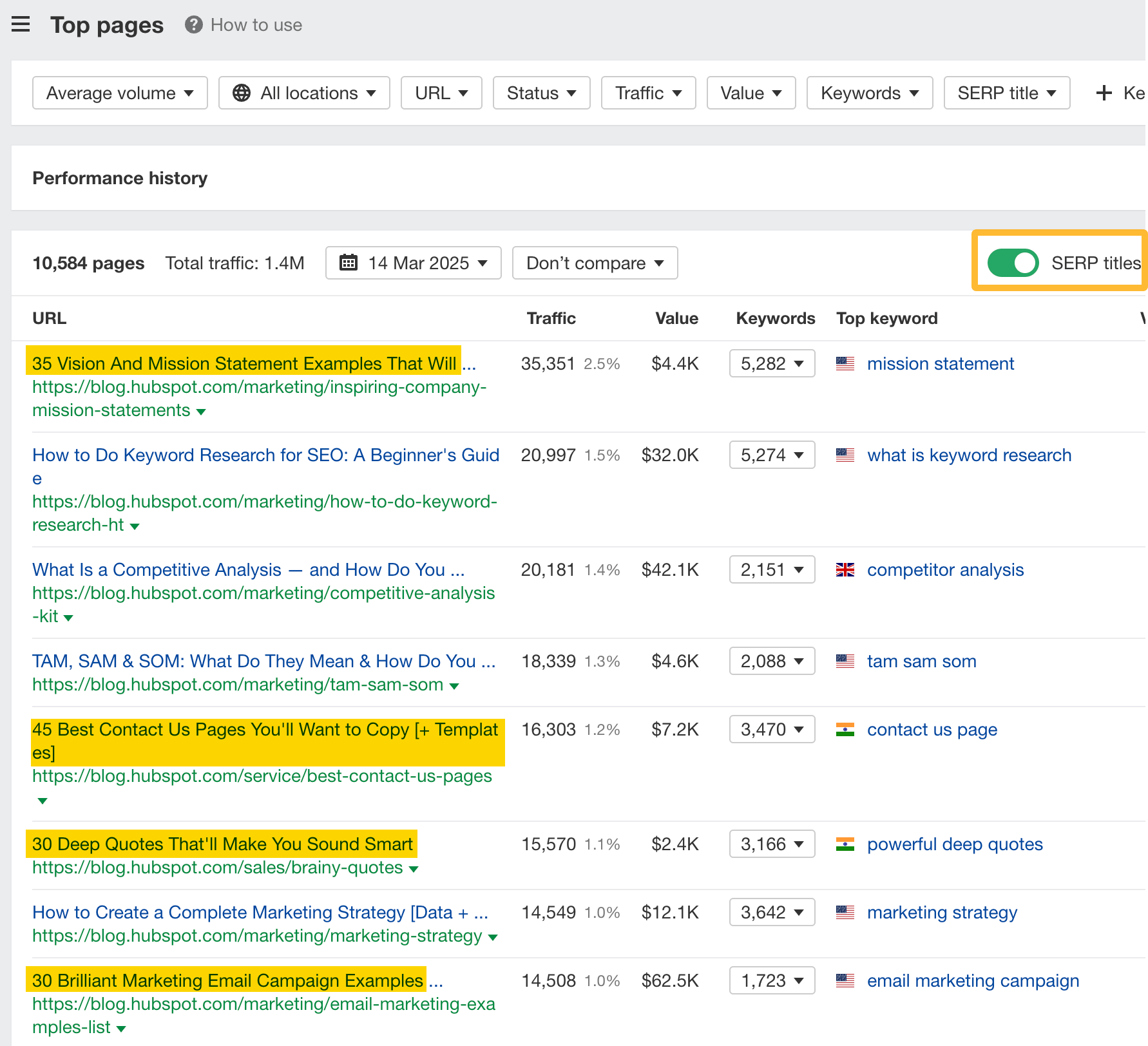
For example, you can see that HubSpot ranks for and gets search traffic from a number of simple listicles. You can tell by looking at the titles—mostly “XX [something]” or “XX [Best]”. You’d want to go through this report and note down those topics that are relevant to your site.
Making simple listicles is straightforward. In fact, so straightforward that AI can easily produce them. That’s why in today’s climate, you need to go above and beyond just simple “here are #1, #2, #3”-type articles. You need to make something that AI cannot reproduce.
The best way to do this is to use personal experience. Instead of just naming items, actually do, use, or experience what you’re writing about. For example, instead of just listing out AI image generators, our Director of Content Marketing Ryan Law actually tested them out:

Focus on adding real-world detail to your simple lists: mini-reviews, personal pros and cons, or what you learned from your experience.
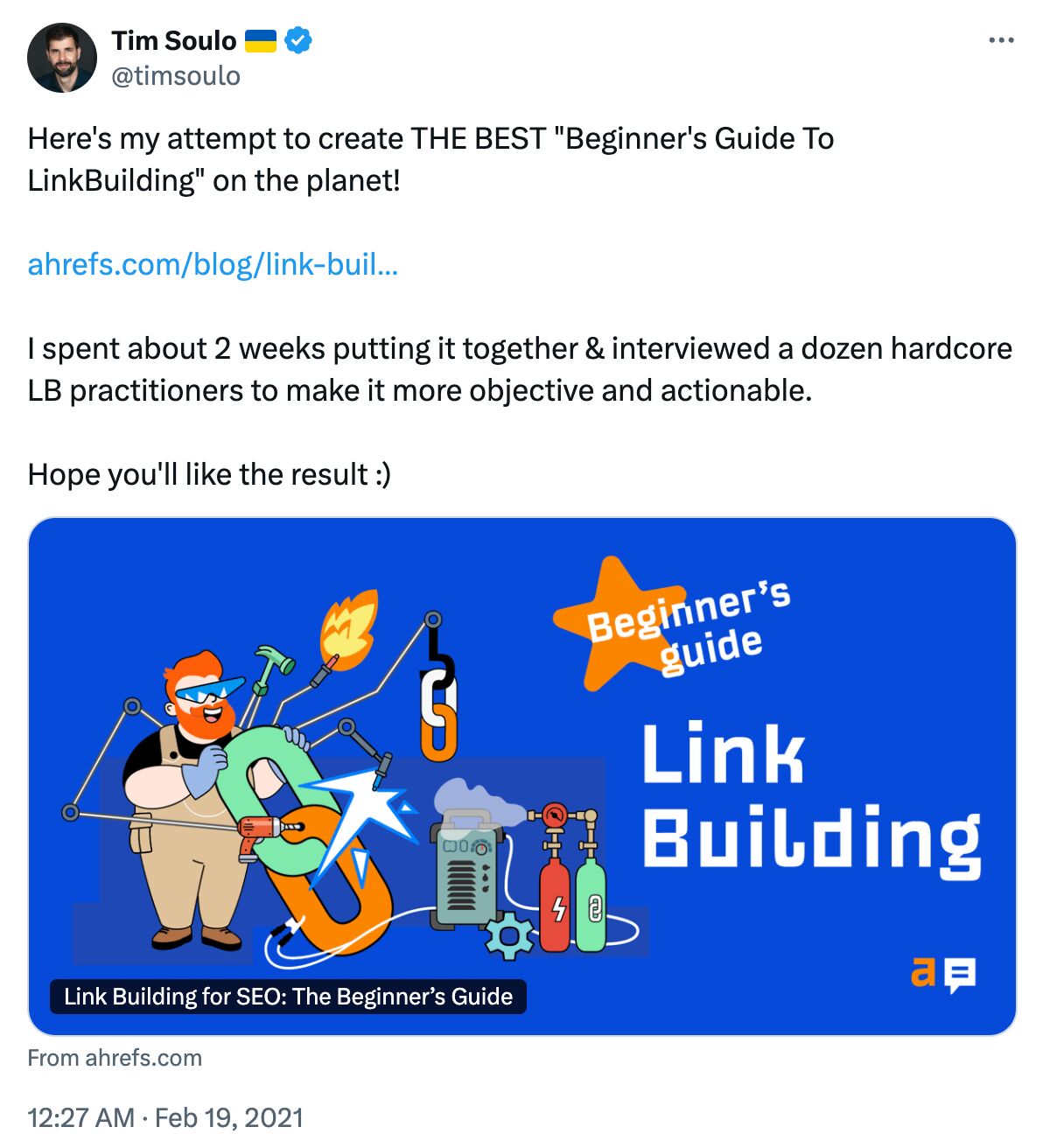
He also made sure to cover all bases and interviewed experts of all backgrounds: agency, consultant, affiliate, in-house, e-commerce, and more.
Having the knowledge is only one part of writing an amazing deep dive. You’ll also need the ability to architect your post in a way that’s engaging and easy to follow. As my friend Visakan Veerasamy says: “thinking is easy, information architecture is hard.”

One method you can potentially use to structure your guide is to run your target topic in our AI Content Helper. AI Content Helper will help identify the important subtopics people want to see in your guide.
For example, here are the topics AI Content Helper suggests to cover for “event marketing”:

This was really helpful when I was writing my guide to event marketing. Even though the guide was based solely on our experience organizing a large-scale conference, the subtopics were helpful in laying out its structure. Since I knew that searchers want to see subtopics like benefits, how to prepare and plan for one, how to drive demand or market your event, and post-event activities, I covered all of them in my guide:
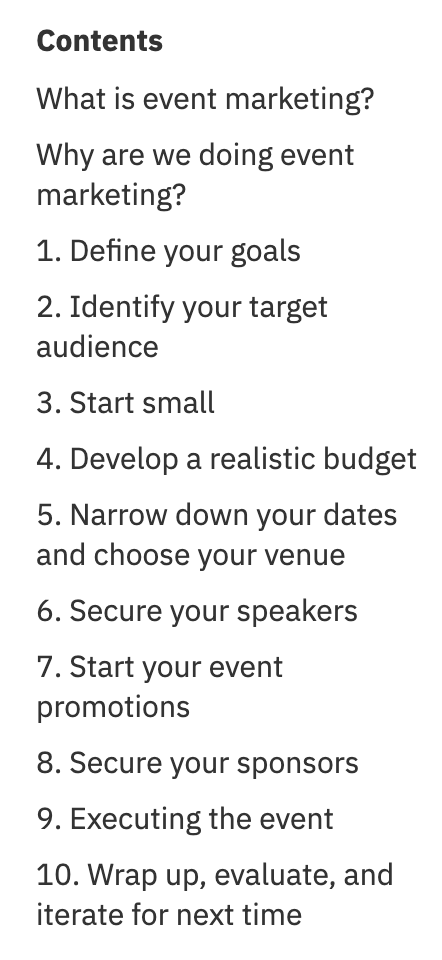

Considering how difficult it is to build links, that’s an incredible achievement.
While there isn’t a surefire way to generate experiments or survey ideas, my best suggestion is to interview your co-workers. After all, it’s likely they’d have run experiments during their work. You can talk to them about the experiments they ran, their hypotheses, the results generated, and what they learned. For example, that’s what I did when I talked to our Head of Partnerships, Igor Gorbenko about what he learned from spending $1 million on sponsoring creators:
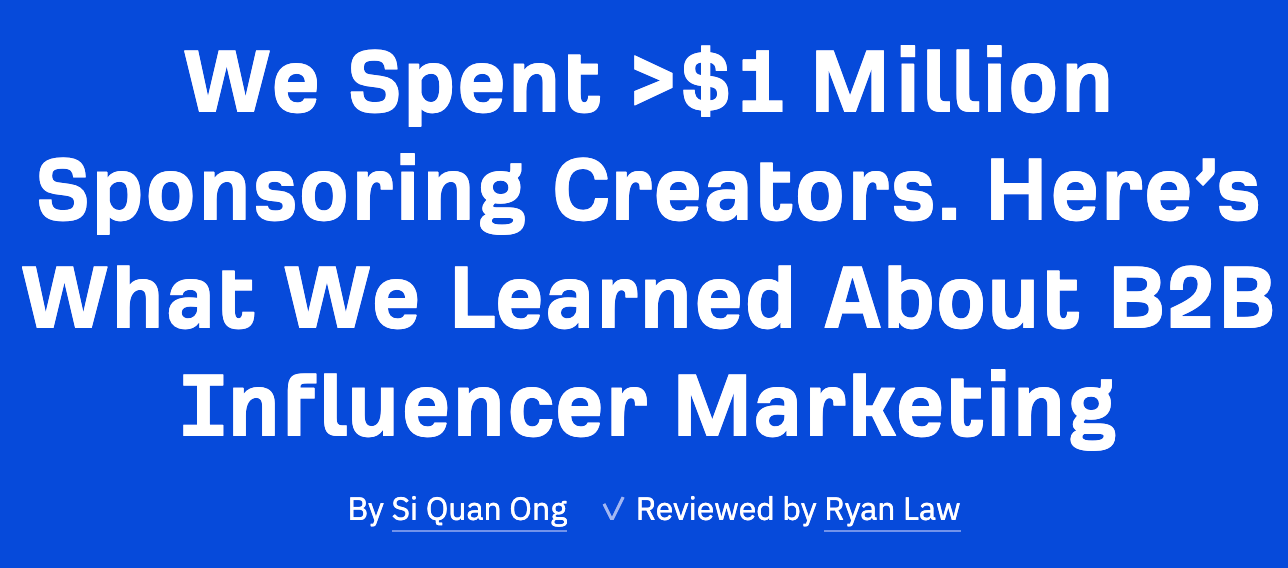
Even if they have yet to run any experiments, they might have questions or curiosities along the way that you could run experiments on.
This is especially true if you talk to your sales team. They’ll have lots of questions from prospects and customers that need to be answered. For example, here’s our Head of Enterprise Sales telling our content team what they want to see more of:
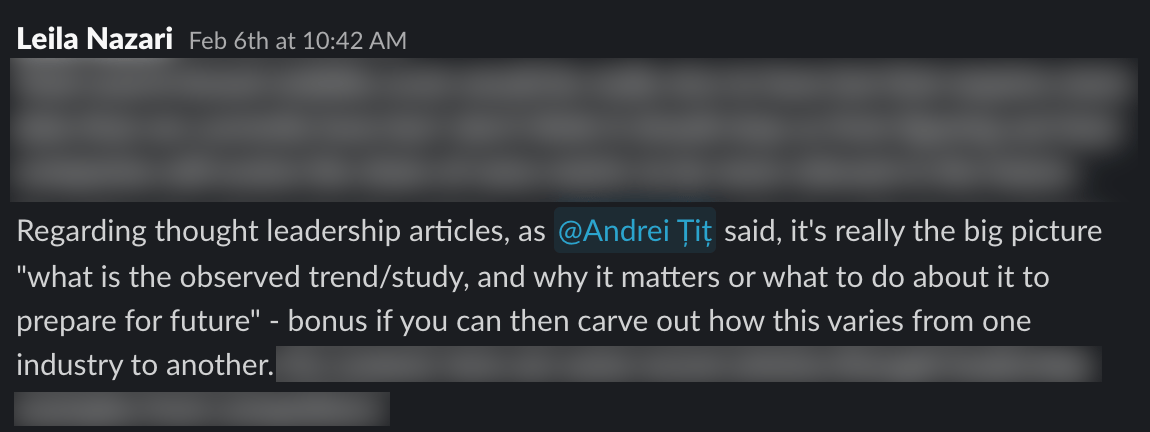
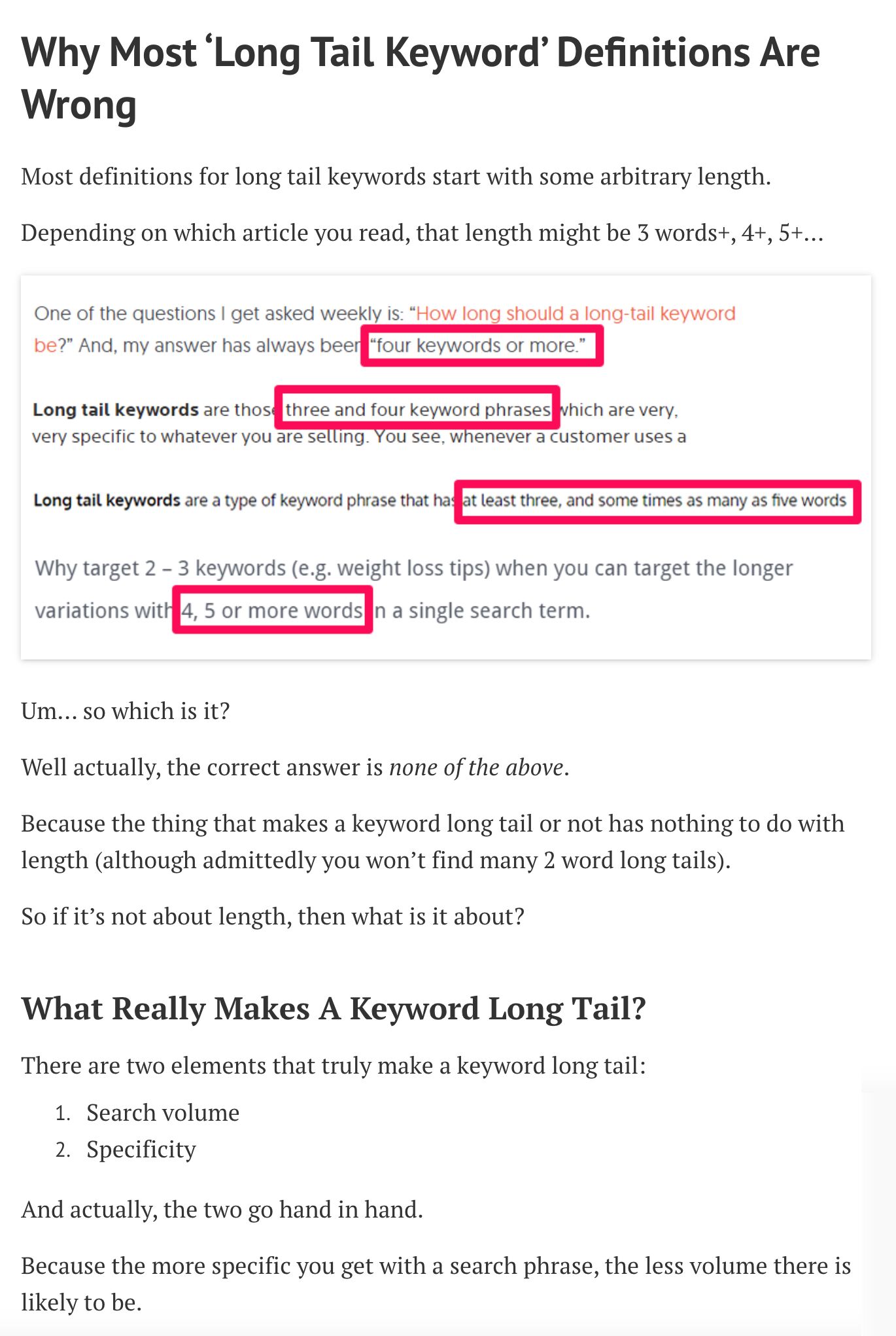
The 2018 version of our article on long-tail keywords
There are no shortcuts to reaching this level. If I had the secret hack, I would be publishing Level 5 content all day long. But evidently I’m not. It’s akin to being in academia—not everyone can be a published professor. That’s why we respect academics so much; you need to conduct brilliant research and generate innovative ideas to even be on that echelon.
That said, academics don’t just publish novel studies all the time. They also publish replications. So if we extend the academia analogy, you’ll realize that you can publish replications of existing studies in your industry too.
Here’s how we can find potential studies to replicate. I’ll go to Content Explorer, enter my target keyword and “study”, and then filter for:
- No explicit results (to remove NSFW results)
- Referring domains >50 (to find studies with lots of backlinks)
- Word count >500 (to find blog posts)
- DR >40 (to find reputable websites)

Scrolling through the results, I see a few potential studies that might be worth replicating:
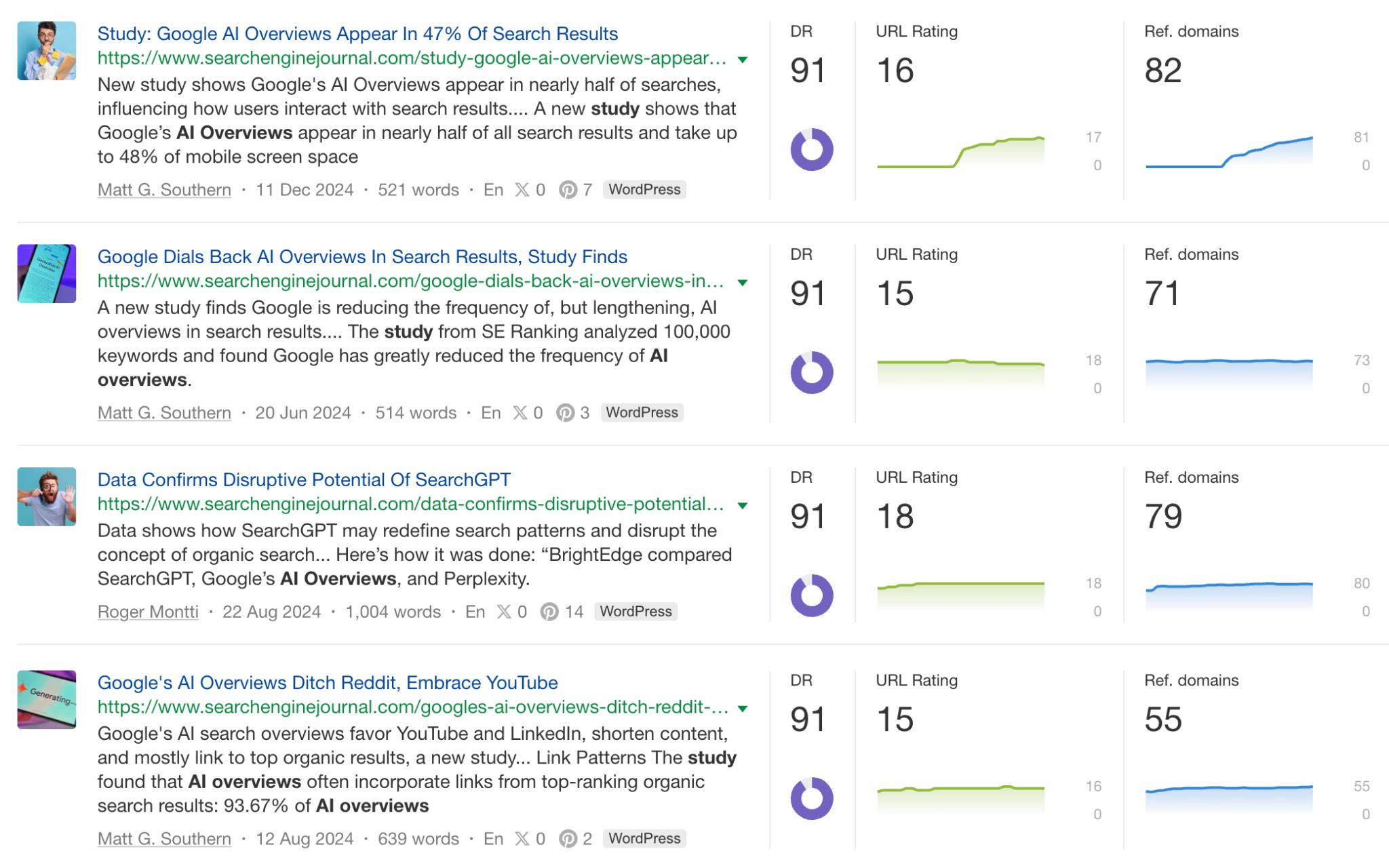
The levels might be a scale but they are also a portfolio. You need all of them, not just the highest level. At Ahrefs, we produce content of all levels.
How do we decide which level to produce for each topic? Let me introduce our BREW framework:
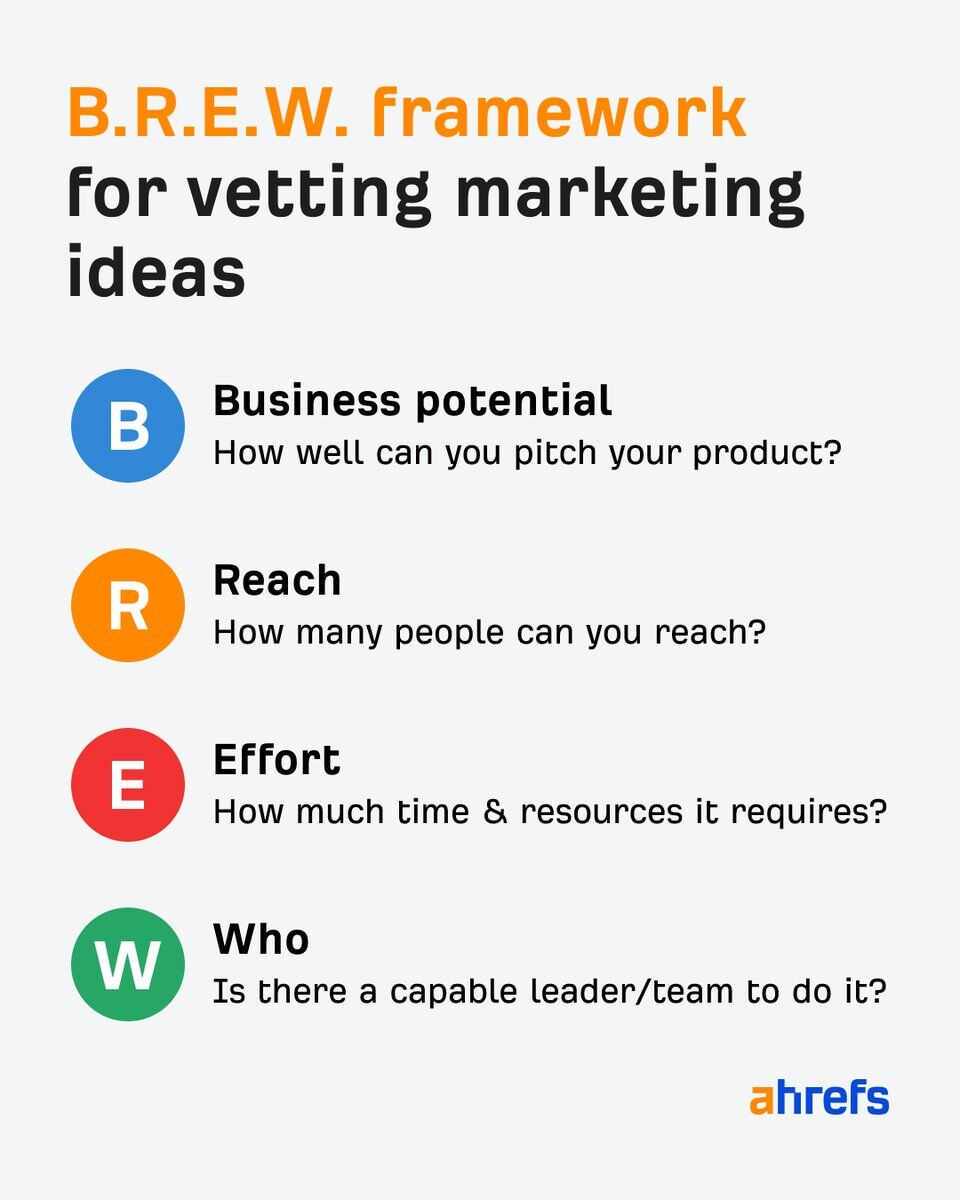
- Business potential — How well can you feature your product or service? We score this on a scale from 0 to 3, where 3 is an irresistible pitch of your product and “0” means there’s barely a way to mention it at all. For example, the topic “social media marketing” would score a ‘0’ and “link building” will score a ‘3’.
- Reach—Who are you reaching, and how many can you reach? We might go viral on TikTok, but the millions of random people watching are highly unlikely to buy a premium SaaS product. A bottom-of-the-funnel article may have a lower traffic potential, but we could be reaching decision-makers at companies.
- Effort — How much time and resources would you need? Will it be worth it? Perhaps you might even make a minimum viable article, where you find creative ways to ‘reduce’ the effort while maintaining the same potential reach. For example, you might interview three people instead of 12 for a deep dive guide.
- Who — Who’s going to execute this idea? Does this person have the necessary skills to pull it off? For example, it might be overkill to get your most senior content marketer to make a simple listicle, while it might be early days for your intern to come up with a groundbreaking idea for your industry.
To get the green light, the idea should be balanced in these four factors.
For example, let’s score the topic “link building”:
- Business potential — 3, because our SEO tool is integral for building links.
- Reach — High. Keywords Explorer shows a potential search traffic potential of 4,400.
- Effort — Effort for this article can be scaled up or down, depending on how much work we want to put in.
- Who — Our CMO Tim has decades of experience in SEO.

In this case, since this topic scores well on our BREW framework, we decided to commit resources to make the best link-building guide ever.
Final thoughts
If you want to become a great content marketer or a company known for its high-quality content, you need to climb the content quality ladder.
After all, the higher the level, the harder it is for AI to keep up. You can’t shortcut the process to expertise. You have to learn, put in the work, experience reality, and do it over and over again. That’s how you can come up with innovative ideas to write about.
You may argue that it’s simply a matter of prompting, but without deep expertise, it’s also difficult to write a good, detailed prompt that can get LLMs to generate original ideas. And without expertise, you also can’t tell if the generated output is truly innovative or just regurgitation.
But as I’ve said, treat the levels as a portfolio. You should be creating Level 5 content, but that doesn’t mean you should neglect the Level 1s. There’s a time and place for all of them—and all of them are helpful to readers at different skill levels.
Even better: repurpose your content. Invest the time and effort into a piece of Level 5 content, then splinter them into multiple Level 1s, 2s, and 3s.
That’s how you can make your content go a long way.
Similar Posts
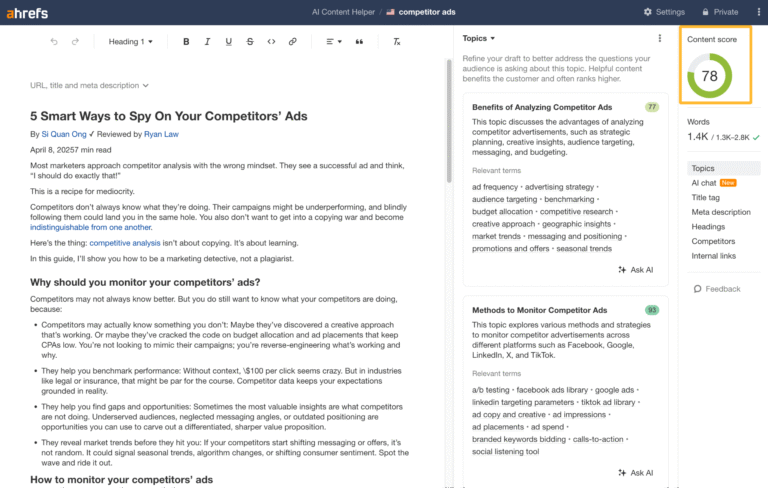
Do Higher Content Scores Mean Higher Google Rankings? We Studied It (So You Don’t Have To)
Built within these scores is an implicit assumption that the higher your score, the higher you’ll likely rank on Google. But is that actually true? To find out, I studied the correlation between rankings and content scores from five content optimization tools: Surfer, Frase, NeuronWriter, Clearscope, and our own AI Content Helper. We found weak…

8 Websites Driving Insane Traffic Using… Calculators
Calculators are the unlikely tactic savvy website owners are using to drive hundreds of thousands (and sometimes millions) of clicks from Google to their websites. In this article, I’ll share some examples of calculators that caught my attention and show you how I found them. (And how you can make one, too.) Groww.in Domain Rating: 75…
Understanding the Difference Between Cache Keys and Cache Tags in Drupal
I recently got this this question via the feedback form on the bottom of the Cache API Overview tutorial: “What is the difference between cache keys and cache tags? Why do I need a tag for node:5 when I can just invalidate it using a partial key like [‘node’, 5]?” After digging into the topic…
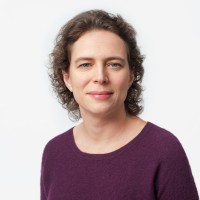
AI Visitors Visit Fewer Pages and Bounce More Often Than Traditional Search Visitors
Google is forever telling us that AI search is better quality… When they [users] get to a decision to click out, it’s a more highly qualified click… What we hope to see over time—and we don’t have any data to share on this—is more time spent on site, which is what we see organically in…
SEO for Drupal Users: What You Need to Know
When I was writing documentation for Drupal CMS’s SEO Tools recommended add-on (aka “recipe”), I realized that not all Drupal site users may be up-to-date on the essentials of SEO and how Drupal can help you make your site discoverable by your target audiences. While Drupal has long been a solid foundation for building search-friendly…

Websites With More Organic Search Traffic Get Mentioned More in AI Search
I don’t think this result will come as a surprise to anyone. Websites that get more traffic in traditional organic search also get mentioned more in AI Search. Popular sites are popular, even if the search system changes. I looked at the top 50 websites mentioned in Ahrefs Brand Radar for Google AI Overviews, ChatGPT,…
